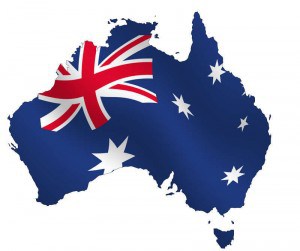
Adam Lynn
Most people agree: They pay their cable company too much money. Not only is this view widely held, it’s also backed up by hard numbers.
Adam Lynn
In September, Free Press submitted a filing with the Federal Communications Commission in response to its inquiry into whether broadband is being deployed in a “reasonable and timely fashion.” While preparing this filing, we dredged up some stunning numbers on the cable industry’s Internet windfall.
Anyone reading this blog post could probably offer dozens of reasons why the Internet rocks, so we don’t always feel as though we’re paying too much for access to such an amazing resource. That said, by the time you finish reading this, I’m willing to bet you will.
Why do I seem so sure? It’s all in the numbers. Let’s first look at cable operators’ obscene profit margins for broadband service. Some financial analysts and institutions have noted that the profit margin for cable Internet subscribers is on the order of 80 percent. In other words, your cable company charges you $40 for something that costs them $8 to supply.
Hard numbers
The research team at Free Press, of which I’m a part, set out to see if we could prove cable’s big swindle by providing some hard numbers. We looked at the latest detailed financial information from Comcast and calculated estimates on the range of costs incurred by the company (for instance, advertising, customer service, upgrades, etc). This estimate does not include the initial expense for laying cable because those one-time costs have been fully recouped.
In our research, we found that for the second quarter of 2009, Comcast had a profit margin for its cable Internet service of about 70 percent (See pp. 41-43 of our filing if you’d like a closer look). Outrageous, right? Getting a little PO’d?
The only service I know for which consumers are subjected to even more obscene overcharging is text messaging. For those of you paying attention to the debate over Internet service providers’ push to further overcharge consumers based on how much bandwidth they use, have a look at pp. 44-45 of our filing (though you may want to have handy a couple stress balls or voodoo dolls before you do). You’ll see just how marginal the increase in providers’ costs is for greater bandwidth use.
One other relevant fact here is that your local cable Internet service uses just a few “channels.” So while about a quarter of cable operators’ revenue comes from selling Internet access, they only allocate around 3 percent of their networks’ total capacity to provide that access..
No equipment upgrades, no faster Internet
With major advances in technology in recent years, U.S. cable operators now have the ability to increase our Internet speeds, but they’ve long been dragging their heels on using their immense profits to invest in their networks. You may have heard about cable companies beginning to offer downstream speeds of “up to” 50 or 100 Mbps using DOCSIS 3.0 technology. Of course, these faster speeds would only begin to catch us up to our overseas counterparts.
Most likely, though, your cable operator still hasn’t begun offering the service, but here is a peek of what you can expect if that changes. In our filing, we run the numbers on DOCSIS 3.0 to illustrate just how cheap these upgrades are in relation to your monthly service fee. In other words, we show just how inexpensive it is for cable operators to offer large swaths of the country much faster speeds.
In general, two pieces of equipment need upgrading in order to get faster Internet: the equipment in your nearby cable building, and the cable modem in your home. Your cable company charges you a monthly modem rental fee separate from your monthly cost for broadband (Comcast just increased its fee). You can also buy your own modem.
The second piece of equipment that needs upgrading for faster Internet is the cable company’s equipment (known as the CMTS). In most cases, this is simply a software upgrade (like an update of your operating system), and the cost savings associated with the upgrade appear to completely offset its cost. Making these upgrades will allow companies to offer much higher speeds, something they should already be doing, given how much we’ve all been paying them for years.
In our research, we discovered all sorts of cable operators and equipment manufacturers discussing just how cheap these upgrades are (see our filing, pp. 40-41). Japan’s largest cable operator revealed that these upgrades cost about $20 per household, while U.S. cable operator Charter puts that number at $8 to $10.
Of course, this all sounds like great news, right? Almost all of us can finally have those speeds that are offered to consumers overseas without an increase in price, given those huge profit margins and the low cost of upgrades. However, as you may have come to expect from U.S. broadband providers, wishful thinking and reality rarely align.
Sticker shock
Despite the low cost of upgrades, most operators are planning to make them in just a few places or, as they call it, “surgically.” The only company that is doing a more extensive job is Comcast. And despite being right in the midst of these upgrades, the company just reported a considerable drop in capital expenditures (read, investment) (see slide 8, here). What’s more, if you are “lucky” enough to have access to these new faster speeds, be prepared for some sticker shock. These cable companies are requiring monthly fees in excess of $100! This is in stark contrast to places that have far higher levels of competition, where companies are offering advertised download speeds of 100 Mbps for $60 per month. Now you’ve got to be riled up, no? Well, things are only going to get worse unless the FCC takes action.
In many of the less lucrative areas where phone companies are reluctant (if not outright opposed) to investing in their networks, cable providers are quickly becoming the only viable option for consumers wanting higher speeds. As it has in many previous quarters, Comcast alone added more subscribers than all the big phone companies combined in the third quarter of 2009. This means that there are more people than ever being swindled for mediocre Internet service. Unless the FCC’s national broadband plan includes strong recommendations to increase competition, this trend will only grow in the future.
If we got your blood boiling while reading this, go click on 09-137 and tell the FCC to stop the cable industry’s Internet swindle.
Adam Lynn serves as Policy Coordinator for Free Press in Washington, DC where he conducts research on issues related to media ownership, public media and the future of the Internet.


 Subscribe
Subscribe




